 A beautiful and apparently noble flower, known as a lily, grows in many gardens. Inflorescences, fragrant, bizarre, of various shades, attract the eye even of those who are indifferent to gardening. Knowing some secrets will make flower care easy. Transplanting lilies in the fall to another place is an important moment for a flower!
A beautiful and apparently noble flower, known as a lily, grows in many gardens. Inflorescences, fragrant, bizarre, of various shades, attract the eye even of those who are indifferent to gardening. Knowing some secrets will make flower care easy. Transplanting lilies in the fall to another place is an important moment for a flower!
Autumn is a time when plants, regardless of species, require special attention. And lily is no exception. It is in the fall that the lilies are transplanted to a new comfortable place. This flower belongs to the family of perennials and transplanting helps to preserve natural properties.
[sc name = "info-dashed" text = "The procedure is carried out on time, which is dictated by variety and climatic conditions."]
Content
The advantage of transplanting in the fall
With the onset of the autumn period, lily bulbs enter a dormant state, the concentration of nutrients from the soil is maximum.
[sc name = "info-attention" text = "With this in mind, transplanting the plant before the soil starts to freeze will allow it to take root and prepare for the upcoming winter low temperatures."]
The need to dig bulbs is determined by the variety and personal preferences of the gardener. For example, specialists recommend transplantation of plants belonging to the group of LA and Asian hybrids. Naturally, the bulb of this variety forms a lot of "children" and the seating allows you to preserve the natural decorativeness of the flower.
Also necessary prepare the currant bushes for winter.
About the deadlines
It is known that in each region of one country the climate differs in its features. This fact is necessarily taken into account when gardening.
Flowering, timing of division and, accordingly, planting, transplanting lilies is also determined in which region they grow. For example, if in the suburbs it is better to transfer lilies to another place in the early fall, then for central Russia it is better to carry out the procedure no later than the last days of August.
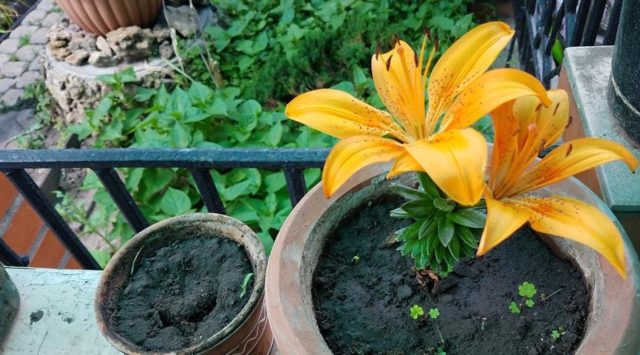
Lilies are found in different regions of Russia. Certain varieties of these plants are also successfully grown in the Urals, although the growing conditions here are much more severe than in other parts of the country. And this must be taken into account when transferring to a new place.
In the middle Urals, tubular lilies are most often found; gardeners also adapted to grow an Asian hybrid. When transplanting throughout the Urals, such time periods are guided - the last of August or the beginning of September. Further postponement of the procedure leads to the fact that the bulbs do not take root, freeze out.
A beautiful, attractive lily can often be found not only in Russia, but also in Ukraine. Soil composition and climatic conditions make this country an ideal place for growing lilies. Here tubular varieties, hybrids bred in Asia gained distribution. Today, species bred by breeders from Holland and the USA are cultivated more and more often.
 Can all lily varieties be transplanted in Ukraine to another place in the fall? Gardeners note - regardless of the flowering period, which are individual for different types of plants, lilies growing in Ukraine have adapted to the autumn change of planting location. The procedure in this country is carried out from October to November. Due to the softness of winter, shelter is not required. Bulbs with strict adherence to the procedure survive 100%.
Can all lily varieties be transplanted in Ukraine to another place in the fall? Gardeners note - regardless of the flowering period, which are individual for different types of plants, lilies growing in Ukraine have adapted to the autumn change of planting location. The procedure in this country is carried out from October to November. Due to the softness of winter, shelter is not required. Bulbs with strict adherence to the procedure survive 100%.
In Siberia, transplanting lilies to another place in the fall is not recommended.As in the northern territories of Russia, frosts start early enough, bulbs may not have time to fully prepare for wintering.
In general, experienced gardeners have come up with a simple rule for determining the start time of a transplant - they begin the procedure a month after the flowering of the plant ends.
[sc name = "info-hand" text = "Experienced gardeners recommend using bulbs that are grown on their own or purchased from local lily breeders for autumn transplantation.”]
Seat selection
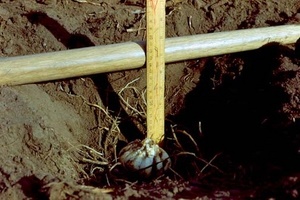 The success of the transplant process depends on many factors. And one of the most important is the right choice of place. Most lilies love well-lit areas, but they manage to achieve full growth and flowering in small partial shade.
The success of the transplant process depends on many factors. And one of the most important is the right choice of place. Most lilies love well-lit areas, but they manage to achieve full growth and flowering in small partial shade.
It is important to remember that plants cannot be planted under trees. In such conditions, they will not be enough light and moisture. Another feature - lilies do not tolerate drafts, strong gusts of wind. At the same time, colors require air circulation to avoid the development of gray rot.
Any ornamental plant, including lily, does not like excess moisture, as well as its stagnation. This feature is important to consider when choosing a place for transplantation.
Priming
Lily is a plant that makes particularly high demands on the soil and its nutritional value. If the soil is developed, in other words, devoid of nutrients, the flowers will develop poorly and bloom.
For the full growth and development of most types of lily, it is enough that the fertile layer is 20-30 cm deep. The soil can be of a loamy type with an acidity that is as close as possible to the neutral indicator.
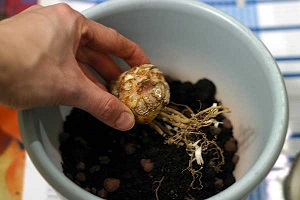 As shown in the video (see below), the transplantation of lilies to another place in the fall is preceded by a mandatory digging of the soil in the selected place. Deepen the shovel should not be more than 35 cm. Heavy soil is diluted with sand and peat. For light soil limited to peat. To increase fertility, about 100 g of fertilizer (superphosphate) is applied per square meter.
As shown in the video (see below), the transplantation of lilies to another place in the fall is preceded by a mandatory digging of the soil in the selected place. Deepen the shovel should not be more than 35 cm. Heavy soil is diluted with sand and peat. For light soil limited to peat. To increase fertility, about 100 g of fertilizer (superphosphate) is applied per square meter.
When transplanting lilies, an important role is played by the substrate, which will surround the root system. From it, the bulb of the plant will take all the substances necessary for the development.
[sc name = "info-dashed" text = "It is important to consider that each species requires a different soil. For example, such varieties as Tubular and others like it grow better in a slightly alkaline type of soil. Whereas Asian and American hybrid species require a slightly acidic soil. ”]
A slightly alkaline environment is easy to create with chalk or wood ash mixed with the base soil. Peat helps acidify the soil.
These measures facilitate the onion adaptation to a new place and changes in external factors - temperature, amount of moisture during wintering.
Optimal depth
When planning a lily transplant in the fall, it is important to know at what depth it is best to plant bulbs.
There is a rule for determining the landing depth:
- planting depth is equal to three bulb diameters.
When transplanting take into account the composition of the soil. For example, lilies in loamy soil can not be planted too deeply - the plant will not be able to sprout. Light sandy soil will not allow the flower to fully root if the bulb is planted finely.
Experienced gardeners recommend such standards for the height of the upper layer of soil:
- baby bulbs - 7 cm;
- bulbs of medium size - 10 cm;
- large onions - 15 cm.
It should be remembered that over time, the bulb of the plant independently deepens. Therefore, you should not dig an excessively deep hole.
Plant preparation
It is convenient to carry out lily transplantation to another place precisely in the fall due to the fact that the bulbs are at rest and the gardener can shift the time, choosing the optimal time. A common question for inexperienced flower breeders is when to start digging. It is known that the condition of the bulb determines what the summer was - arid or rainy.
If the amount of precipitation was small, onions will form later than natural dates. The best solution is to dig out one test copy and evaluate it. If the surface is elastic, dense, you can start transplanting.
Before you start digging the bulbs, the green part of the plant is cut off entirely. If signs of the disease are detected on the stem, the bulb is removed from the ground, after which the affected part is carefully twisted. Planting stock should also be inspected for rot.
 The bulbous nest disintegrates after being taken out of the ground. However, this may not happen. In this case, all parts of the nest are carefully separated from the mother plant by hand. If dry, dark flakes were found, they must be removed. Whole roots are shortened to a length of 15 cm, and those affected by rot are removed entirely.
The bulbous nest disintegrates after being taken out of the ground. However, this may not happen. In this case, all parts of the nest are carefully separated from the mother plant by hand. If dry, dark flakes were found, they must be removed. Whole roots are shortened to a length of 15 cm, and those affected by rot are removed entirely.
To avoid the development of diseases, all planting material is soaked in specialized disinfectant formulations. This procedure is required in cases where a lot of rotten roots and scales are found.
To place the plant in a new place, it is advised to choose a sunny day. Wells should be prepared in advance. Be sure to mulch the planted plants. Depending on the species, this is done with peat or humus. The thickness of the layer should not exceed five centimeters.
In some species of lilies, bulbs are formed in the axils of the leaves. They are called bulbs. Such specimens are planted in grooves, the depth of each of which does not exceed three centimeters. The distance between landings is about five centimeters.
[sc name = "info-dashed" text = "If bulbs are planted, children, it is mandatory to build a shelter for the winter. In this case, the chances of survival will increase. ”]
Proper care in the autumn
In order for the bulbs to form properly and accumulate enough nutrients for wintering, the gardener should properly care for the plant. With the onset of the autumn period, nursing activities are supplemented by pruning. You can not do this immediately after flowering. Enough to break off dry inflorescences. Stems with leaves and photosynthesis occurring in them, as noted, is important for the proper formation of bulbs.
Future planting material suffers from lingering rains typical of the fall season. To avoid this, the wells are covered with a film. For convenience, a pipe frame is installed around the perimeter - if it rains, just cover the covering material.
 Inexperienced gardeners are wondering - how to feed plants in the fall. It should be remembered that, like other perennial plants, lilies do not tolerate late feeding. It is better if the last amount of fertilizer will be applied in late August.
Inexperienced gardeners are wondering - how to feed plants in the fall. It should be remembered that, like other perennial plants, lilies do not tolerate late feeding. It is better if the last amount of fertilizer will be applied in late August.
Lily is harmed by the use of manure as a fertilizer. You can not use and dressing containing chlorine, ammonium nitrate. All these substances have a detrimental effect on the bulbs.
The need for insulation. Most species survive winter cold without damage even when cultivated in the middle zone. Despite this, experienced gardeners recommend covering the planting material in the first year, regardless of type.
After you transplanted a lily in the fall to another place, the beds are covered with dry leaves, straw, spruce branches, as soon as the first frosts pass and sunny and dry weather sets in. If in the cultivation region of the plant there are periods of thaw in winter, which alternate with frost, it is recommended to arrange additional shelter from agrofibre.A film with waterproof qualities helps protect the planting from excess moisture.

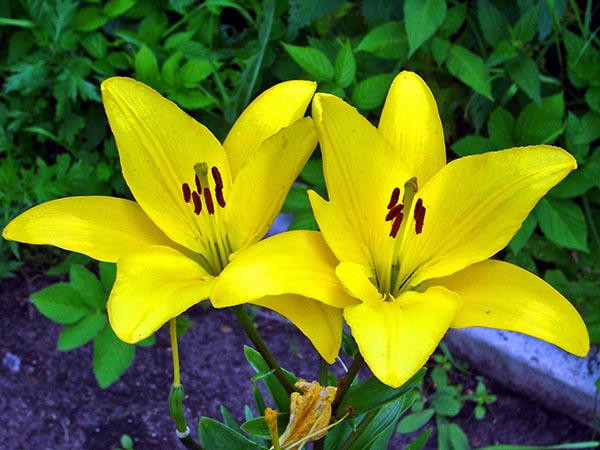
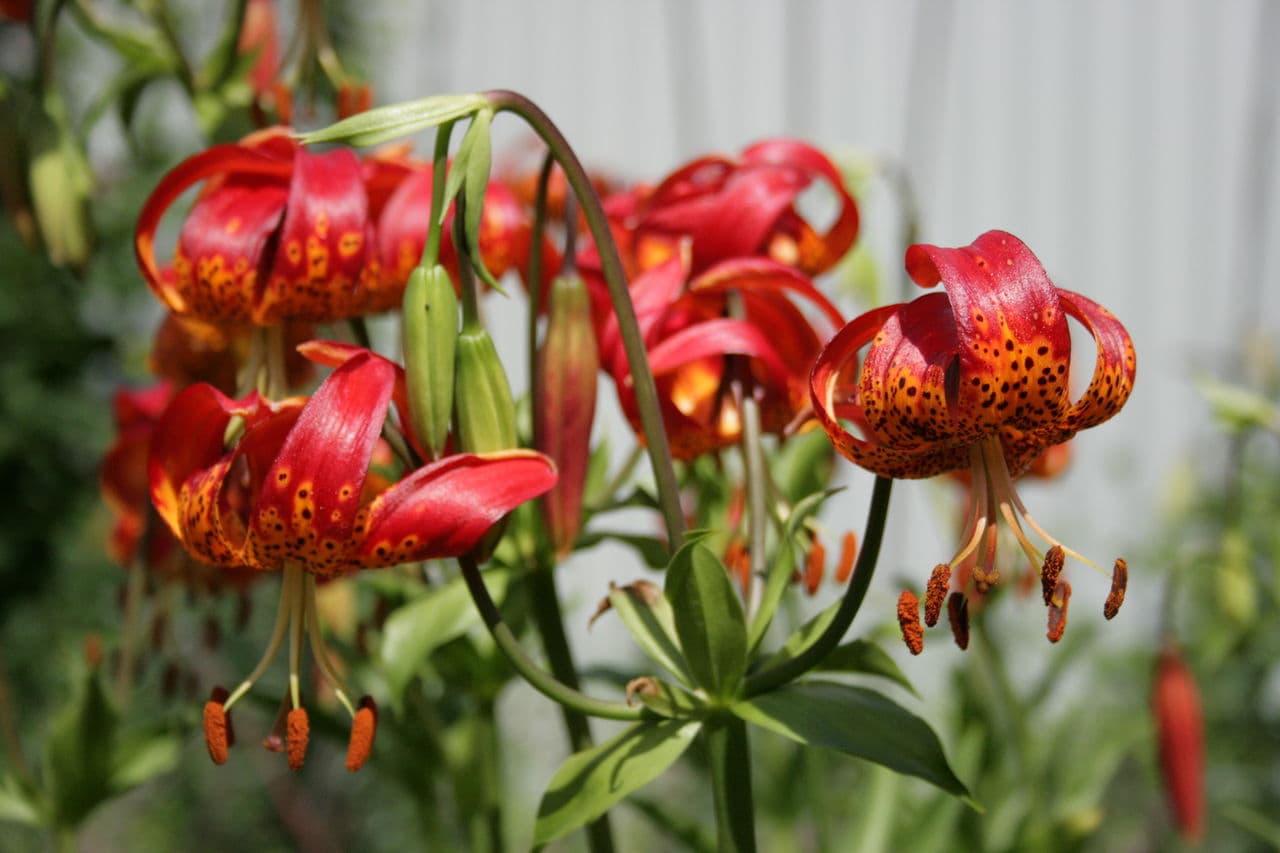
 Lily care after flowering
Lily care after flowering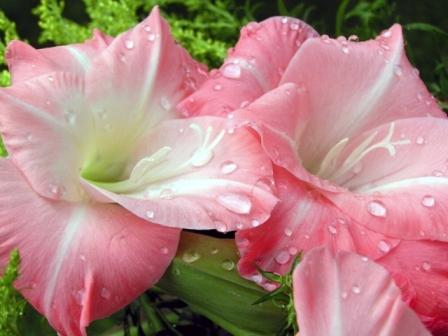 Lilies faded: what to do next?
Lilies faded: what to do next?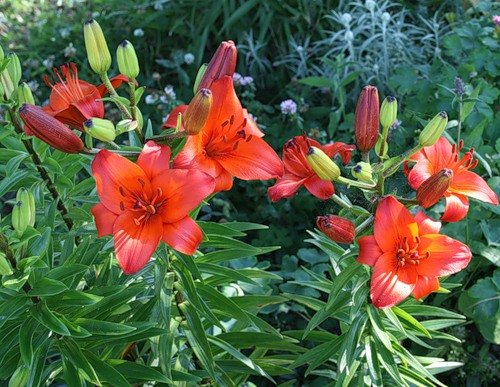 Planting lilies in the open ground and caring for them
Planting lilies in the open ground and caring for them
svetlana
Hello, if we did not have time to transplant lilies, what should we do? thank